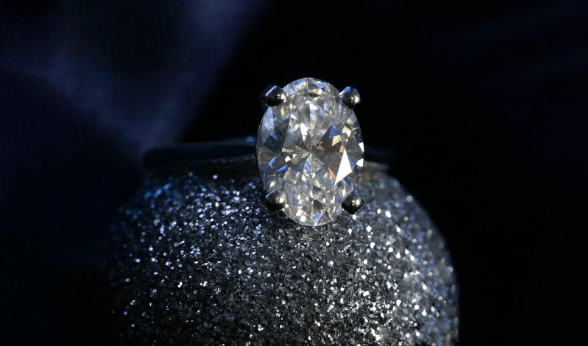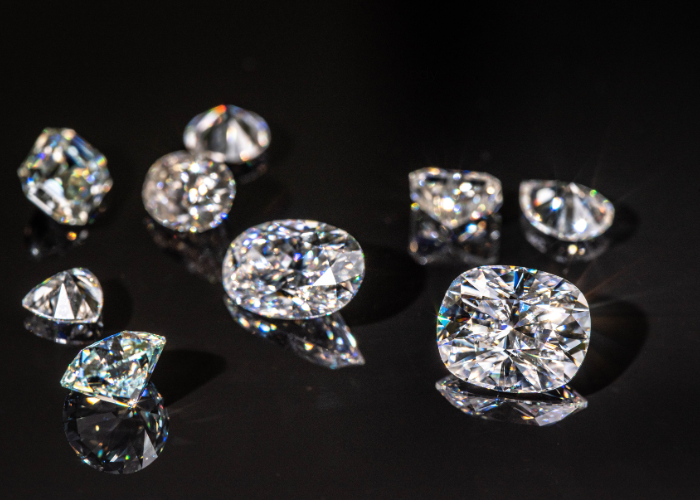
GIA oder IGI: Grasping the Distinction in Jewel Affirmations
In the realm of precious stones, two noticeable evaluating associations stick out: the Gemological Organization of America (GIA) and the Worldwide Gemological Foundation (IGI). While buying a jewel, understanding the distinctions between these two confirmation bodies is essential for going with an educated choice. This article expects to give a nitty gritty examination of GIA oder IGI, guaranteeing that our perusers can explore the intricacies of jewel certificate with certainty.
What is GIA?
The Gemological Foundation of America (GIA) is a non-benefit association laid out in 1931. Known as the highest quality level in precious stone evaluating, GIA’s standing is based on thorough exploration, training, and the advancement of reviewing norms. GIA’s reviewing framework assesses precious stones in light of the Four Cs: Cut, Variety, Clearness, and Carat Weight.
GIA’s Evaluating Interaction
GIA’s evaluating cycle includes a fastidious assessment of every jewel by a group of prepared gemologists. Every precious stone goes through a progression of tests to evaluate its qualities. The jewel is assessed for:
Cut: The nature of the jewel’s cut effects its brightness and shimmer. GIA appoints grades from Fantastic to Poor.
Variety: GIA grades jewels on a scale from D (lackluster) to Z (light yellow or brown). A drab jewel is frequently the most pursued.
Lucidity: This alludes to the presence of incorporations and flaws. GIA utilizes a scale from Immaculate (no incorporations apparent under 10x amplification) to Included (considerations noticeable to the unaided eye).
Carat Weight: This actions the size of the precious stone. One carat is equivalent to 200 milligrams.
The Significance of GIA Accreditation
GIA certificate is exceptionally respected in the gems business and among purchasers. The association’s obligation to fair-mindedness and exactness imparts trust in purchasers. A GIA-confirmed jewel normally orders a more exorbitant cost, mirroring its trustworthy reviewing and the apparent worth of its confirmation.
What is IGI?
The Global Gemological Foundation (IGI), established in 1975, is one more vital participant in the precious stone evaluating industry. While IGI additionally gives evaluating reports to gemstones, its attention is principally on precious stones. IGI works on a worldwide scale, offering administrations to many business sectors.
IGI’s Evaluating Cycle
Like GIA, IGI utilizes the Four Cs to assess jewels. Be that as it may, their evaluating cycle might contrast somewhat in philosophy. IGI’s evaluation includes:
Cut: IGI assesses the cut quality however may offer somewhat more permissive reviewing contrasted with GIA.
Variety: IGI utilizes a similar D-Z scale for reviewing precious stone tone.
Clearness: IGI likewise evaluates considerations and imperfections yet may contrast in the limits for specific lucidity grades.
Carat Weight: The estimation norms are like those of GIA.
The Significance of IGI Accreditation
IGI certificate is generally acknowledged and perceived on the lookout. Be that as it may, a few industry experts and buyers accept IGI’s evaluating norms are less severe than Gia’s, prompting potential cost contrasts for IGI-ensured precious stones. While IGI-affirmed precious stones are as yet important, the impression of their evaluating may not hold a similar load as Gia’s.
GIA Oder IGI: A Far reaching Correlation
While settling on GIA oder IGI, it is fundamental to consider different variables that can impact your decision.
1. Notoriety and Dependability
GIA is much of the time apparent as the more prestigious association, known for its thorough reviewing guidelines and complete instruction programs for gemologists. The believability of GIA reports is unrivaled, driving numerous to favor GIA-confirmed jewels over those evaluated by IGI.
IGI, while respectable, doesn’t convey similar load as GIA according to certain buyers. This discernment can influence the resale worth and attractiveness of IGI-confirmed precious stones.
2. Reviewing Guidelines
The evaluating principles of GIA are viewed as more rigid, with itemized models that should be met for each grade. This thoroughness guarantees that a GIA-ensured jewel is really illustrative of its grade. IGI’s guidelines, while still respectable, can be seen as more merciful, possibly influencing the general worth of the jewel.
3. Market Worth
Jewels reviewed by GIA regularly have a higher market esteem because of the trust and believability related with the GIA confirmation. Purchasers can hope to pay a premium for GIA-guaranteed jewels, mirroring the association’s standing.
Interestingly, IGI-confirmed jewels might be more reasonable, interesting to frugal customers. Nonetheless, the resale worth may not be actually that powerful of GIA-guaranteed stones, which could affect long haul speculation contemplations.
4. Evaluating Reports
Both GIA and IGI give complete evaluating reports specifying the precious stone’s attributes. GIA reports are many times considered to be more thorough and incorporate extra data like a plotted outline of considerations. IGI reports, while instructive, may not necessarily in all cases give a similar degree of detail.
5. Purchaser Inclination
With regards to shopper inclination, numerous people choose GIA-ensured jewels for true serenity. The conviction that GIA gives the most dependable reviewing can intensely impact purchasing choices. While IGI-guaranteed precious stones are a suitable choice, purchasers might in any case incline towards GIA while making a huge buy.
Picking the Right Certificate for You
Eventually, the decision among GIA and IGI affirmation boils down to individual inclination and needs. For purchasers focusing on long haul esteem, venture potential, and resale valuable open doors, GIA might be the favored decision. Then again, those looking for a quality precious stone at a more open cost might view IGI-ensured jewels as a reasonable other option.
Tips for Purchasers
Instruct Yourself: Comprehend the significance of the Four Cs and what they mean for the jewel’s worth.
Demand Confirmation: Consistently request the evaluating report and check its realness prior to making a buy.
Analyze: Check out at jewels from both GIA and IGI, gauging the upsides and downsides of each prior to choosing.
Conclusion
In conclusion, both the GIA and IGI assume critical parts in the jewel business. While GIA is broadly perceived as the forerunner in precious stone reviewing, IGI offers important types of assistance at cutthroat costs. By understanding the distinctions between these two associations, shoppers can settle on informed choices while buying a precious stone that addresses their issues and assumptions.









:max_bytes(150000):strip_icc()/gettyimages-958605570-2000-7fd5f1d655c64da7863195e4c0b58d4f.jpg)

